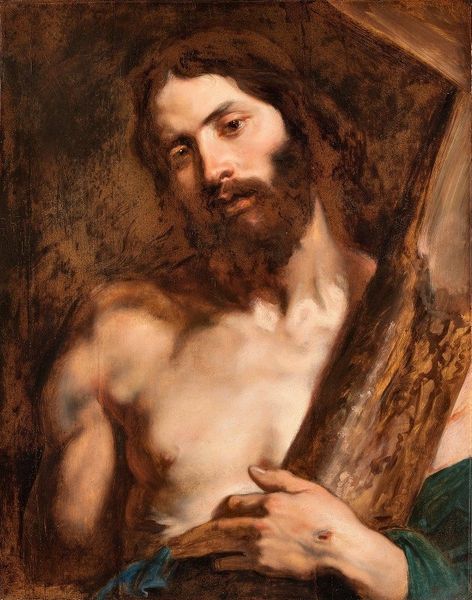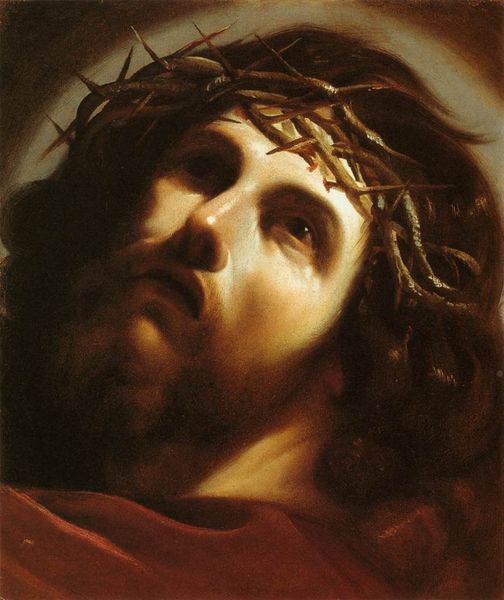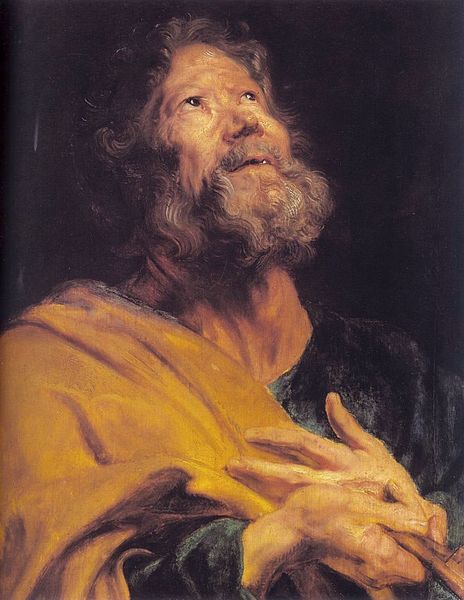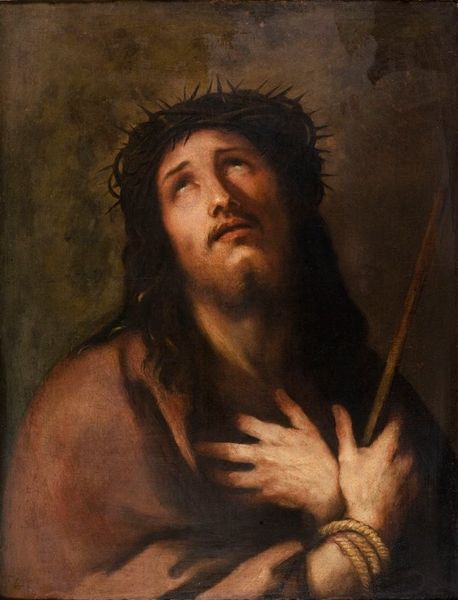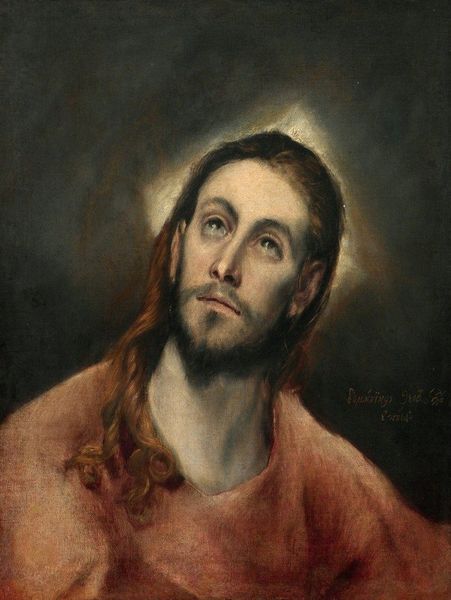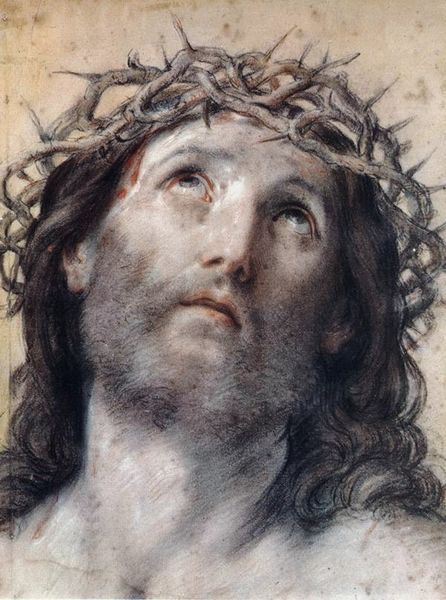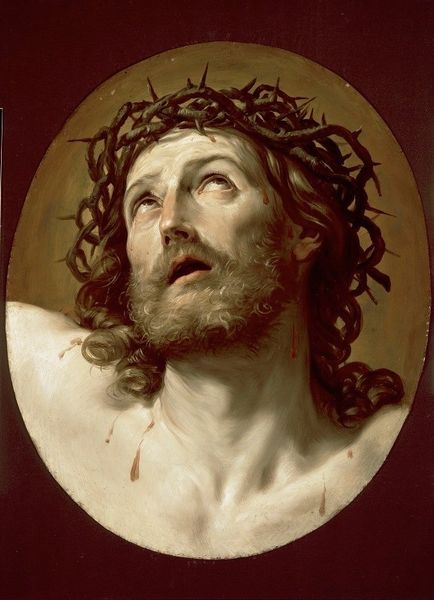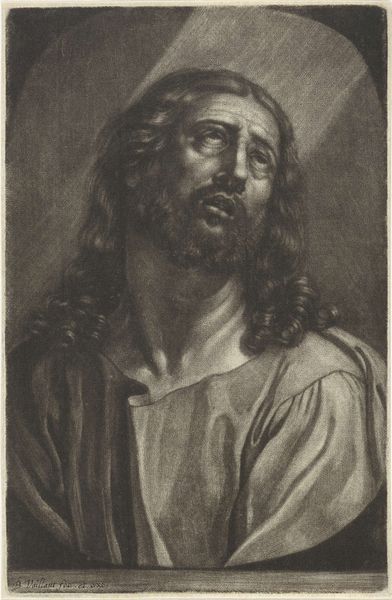
oil-paint
#
portrait
#
baroque
#
oil-paint
#
oil painting
#
history-painting
#
realism
Copyright: Public domain
Curator: Here we have Anthony van Dyck’s "Head of a Robber," dating from 1618 and rendered in oil. What are your first impressions? Editor: Immediately, the intense upward gaze is striking. The artist’s technique captures an almost painful longing. It’s also remarkably raw. The rough texture, created with thick, swirling brushstrokes, gives it a very immediate feeling. Curator: Absolutely. Considering its socio-political context, the portrayal prompts an intriguing exploration of the dynamics between marginalized individuals and prevailing societal norms. It raises complex issues of power, criminality, and moral judgment in seventeenth century Europe. Editor: Focusing on the form itself, I'm fascinated by how van Dyck employs light and shadow to model the face and neck. The chiaroscuro—the strong contrast between light and dark—heightens the emotional intensity. Look how it accentuates the lines of his brow and the hollows of his cheeks. Curator: It's a study in masculinity, but a challenged masculinity, perhaps. What does it mean to depict someone of such social standing in such a raw state? How do class and moral codes intertwine to define such characterizations at that time? Editor: The color palette is quite limited—earthy tones of ochre, brown, and black predominate. It amplifies the immediacy but also evokes feelings of constraint and perhaps hopelessness? Curator: These questions certainly resonate, underscoring the artist's exploration of humanity's complex dimensions. We see this engagement played out further through contrasts of realism with dramatic historical compositions. The depiction makes one wonder: How far does empathy extend in worlds rife with inequalities? Editor: Indeed. In my close analysis, it feels that Van Dyck's handling of the oil paint, the brushwork itself, invites such readings. Curator: It leaves us reflecting on power, representation, and empathy through a lens focused by art's potential to confront. Editor: Agreed. The painting's visual language conveys both desperation and resilience.
Comments
No comments
Be the first to comment and join the conversation on the ultimate creative platform.
